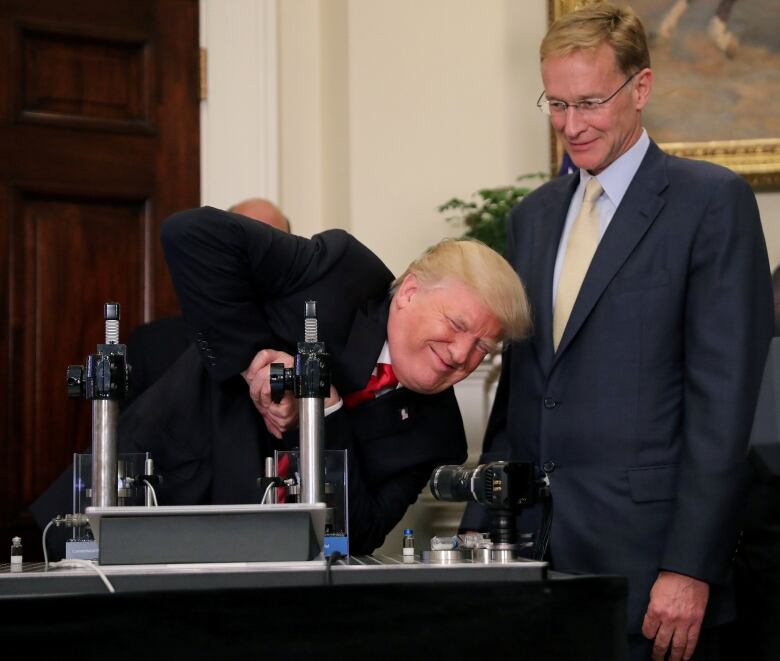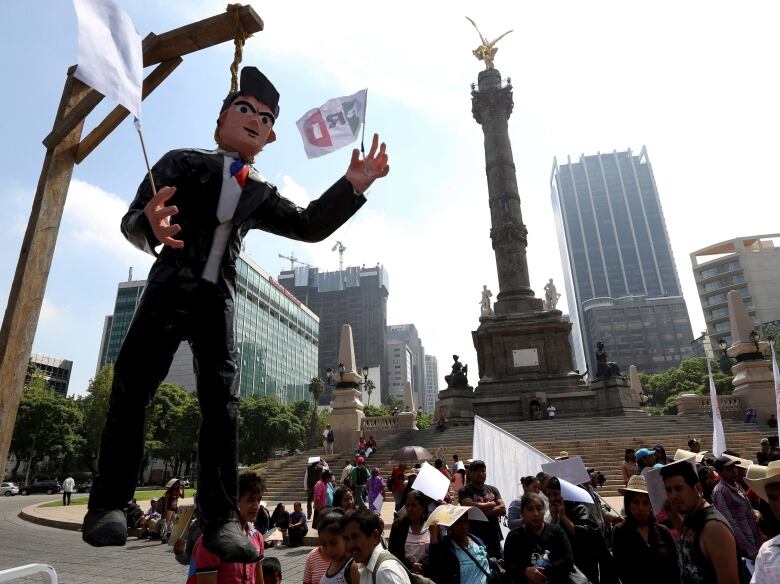Trump's NAFTA do-over: A $63B 'fool's errand,' Canada's red line and other sticking points
Here are some issues worth watching when trilateral talks begin on Aug. 16

If the Trump administration's top-line mission for renegotiating the North American Free Trade Agreement is to balance what the U.S. president blasts as an "unfair" trade deficit with Mexico, American negotiators are bound to fail, trade experts warn.
That is, unless the Canadians leave the trilateral talks first.
As NAFTA talks begin on Aug. 16 in Washington, watch for concessions, sticking points and echoes of Trump's withdrawal from the Trans-PacificPartnershipon his third day in office. The discussions would update an agreement that took effect nearly a quarter of a century ago in 1994.
The talks will be wide-ranging. Here are a few issues worth watching:
Trump's trade-deficit fixation

Econo-geeks poking fun at this misunderstanding have joked on Twitter about their "trade imbalance" with their supermarket, says Laura Dawson, the director for the Canada Institute at the Wilson Centre.
The trade-balance issue is really misleading.Political scientist Laura Dawson
"Nobody's saying, 'I want to equal things up, and my grocery store should be buying as much from me as I buy from them,'" she says. "So the trade balance issue is really misleading."
Trade deficits are determined by complex conditions, she says, which is why they can't be adjusted through trade policy. Focusing on the trade deficit ignores job growth, for example. Even if cars made in Mexico aren't exported to the U.S., American jobs still get a boost because parts are sourced in the States.
As a serious goal outlined in the administration's NAFTA negotiation objectives, "seeking to reduce the goods trade deficit this way doesn't makeany economic sense," says Chad Bown, an expert in trade law and a senior fellow with the Peterson Institute for International Economics.
He says it would be a "fool's errand" to attempt to do so through these negotiations.
A U.S. gift to Canadian shoppers
If you've ever spotted a great shopping deal online in the U.S., only to get slapped with hefty tariffs after your purchasecrosses the border, blame Canada's de minimis rate.

Washington is looking to raise the Canadianlimitto $800, which would benefit consumers and expand choice, but rankle members of Parliament with border constituencies.
"It's politically contentious because you'll have some MPs saying, 'I want to hold the line against cross-border shopping,'" Dawson says.
Ottawa's red line
The deal-breakerfor Ottawa is the U.S. proposal to kill Chapter 19,a unique process that allows Canada and Mexico to appeal duties imposed by the U.S. through independent panels, rather than having their cases litigated through U.S. domestic courts.
"There's always going to be the perception those courts are going to be biased in favour of the Americans," Bown says.
Canada's fight to maintain or even expand the provision for the special tribunals is among the thorniest issues on the table.

For example, the administration wants to employ the rarely used 1962 Trade Expansion Act to investigate whether imports of steel threatennational security.
Canada and Mexico see Chapter 19 as a safeguard mechanism, and the tribunals have ruled in favour of Canada on softwood lumber.
Canada's gambit
Toronto-based international trade lawyer Barry Appleton finds Canada's apparent willingess to fall on the Chapter 19 sword surprising.
"For Canada, getting rid of Chapter 19 would not be fatal, but losing the NAFTA would be catastrophic to the Canadian economy."Canada has taken grievances to the binational panels only three times in the last decade.
Appleton suggests Chapter 19 has become obsolete.
Ted Alden, a senior fellow at the U.S. Council on Foreign Relations who specializes in U.S. economic competitiveness, argues Canada may actually be in position of leverage. If the trilateral NAFTA collapses, U.S.-Canada trade would revertto the 1989 bilateral Free Trade Agreement.
"Canada goes back to its own set of rules with the United States, and that's not a bad position," Alden says. "Although that's not to say the Trump administration couldn't decide to 'tear up' that one, too."
Visas and Buy Americantrade-offs
Were Canada and Mexico to let go of Chapter 19, Alden says, they may be willing to use it as a bargaining chip to negotiate for easing Buy Americanrules, allowing non-U.S. firms to bid on U.S. government contracts.
Canada and Mexico also want to modernize the language to add industries in a digital economy, potentially allowing more skilled foreigners to work in the U.S. with professional or TN visas.
"The U.S. has long been adamantly opposed to doing anything that smacks of changing immigration rules through labour," Alden says.
Rules of origin
The U.S. wants to tighten rules-of-originmeasures, which are meant to govern whether a product qualifies for duty-free access in the member nations based on the level of North American content.

The U.S. may be interested in raising these levels in a bid to boost American production and shut out Asian competition, a prospect some in the auto sector fear might disrupt supply chains.
"The U.S. doesn't seem to be talking about using NAFTA rules of origin to promote manufacturing in NAFTA, but using it to promote manufacturing in the U.S.," says Wendy Cutler, a former career trade negotiator.
Shades of the TPP
The resurrection of the Trans-Pacific Partnership, or TPP, is of particular interest to Luis de la Calle, who has headed Mexico's trade negotiations in the World Trade Organization and participated in the original NAFTA negotiations.
"We've already agreed to a text in the TPP discussions, so we'll see if the U.S. goes back to that text or proposes something different," he says.
Trump previously attacked the TPP as "a potential disaster," but an outline of his NAFTA goals seems to borrow from the 12-nation trade pact, including discussion of digital rules and the inclusion of labour and environmental standards that are currently only "side agreements."
Many of those wrinkles were already ironed out in TPP negotiations.













_(720p).jpg)


 OFFICIAL HD MUSIC VIDEO.jpg)
.jpg)



























































































